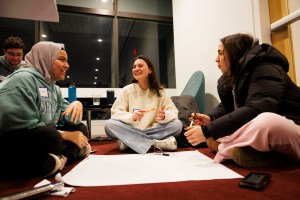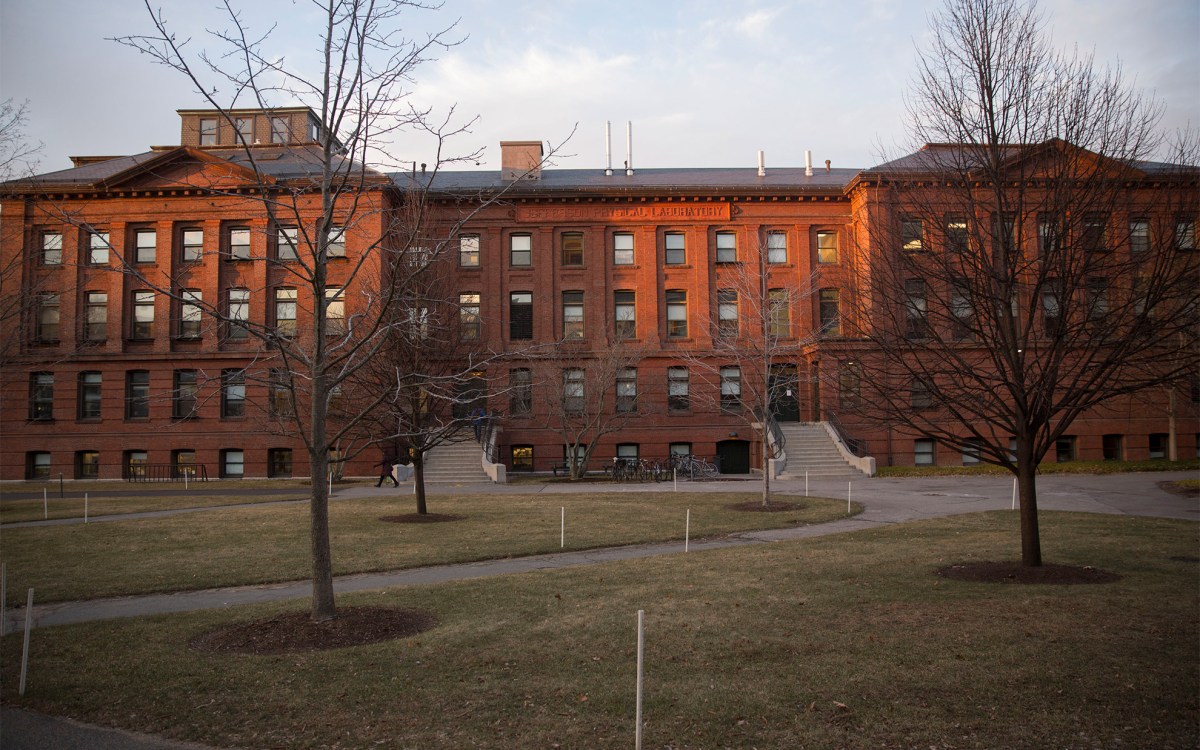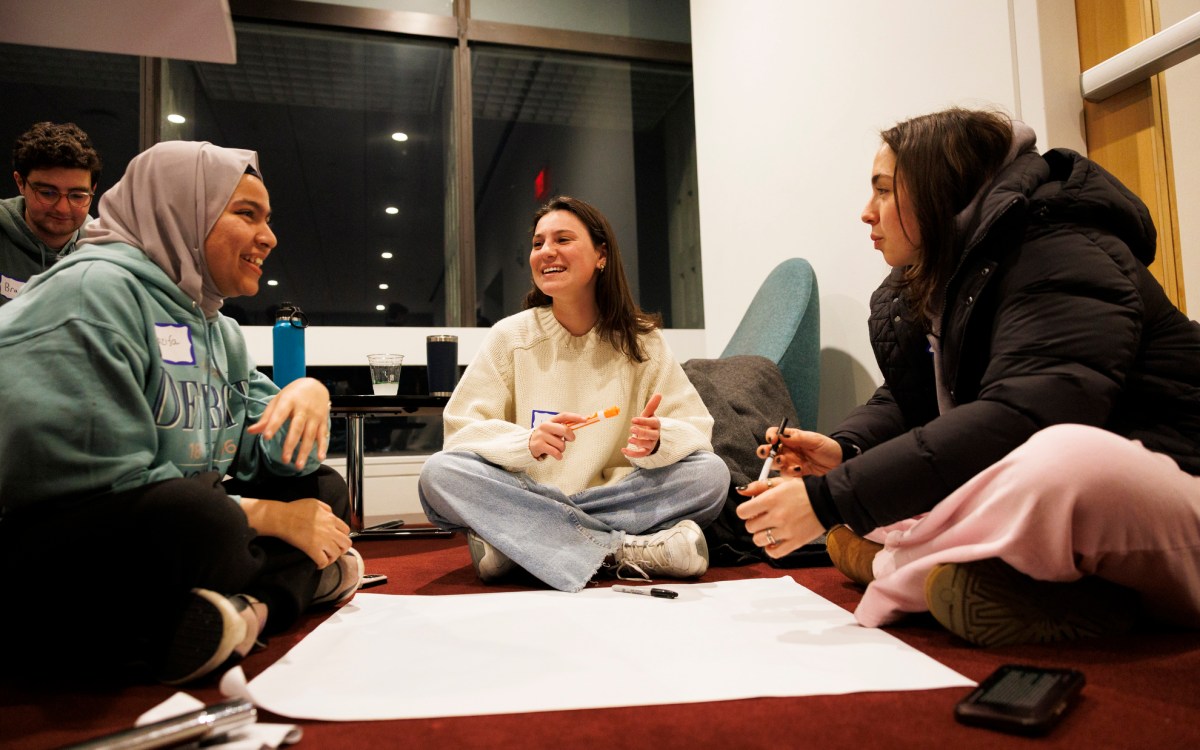HMS to explore ‘complementary’ medical practices
In a move that taps its faculty’s depth and breadth of expertise to expand academic inquiry into complementary medicine, Harvard Medical School (HMS) has established the Division for Research and Education in Complementary and Integrative Medical Therapies. David M. Eisenberg, director of the Center for Alternative Medicine Research and Education at Beth Israel Deaconess Medical Center (BIDMC) and associate professor of medicine at the Medical School, has been appointed director of the new division.
The new division is one of only a small number of academic bodies in the United States that are based at medical schools and focused on complementary and integrative medicine research and education. Its establishment will facilitate collaborative scholarship between HMS and its affiliated institutions and among its investigators in the basic science, clinical, and health policy fields, with an emphasis on the assessment of complementary and integrative therapies and their safety, efficacy, cost-effectiveness, and mechanisms of action. More than 60 faculty members of the Harvard-affiliated teaching hospitals have indicated their interest in participating in the division.
The division’s main priorities are to:
- structure scientific research involving complementary and integrative medicine therapies according to traditional investigative and evaluative techniques, including controlled clinical trials;
- share evidence-based resources across HMS and its teaching affiliates;
- coordinate educational programs and policy development in such areas as credentialing, referrals, and co-management of patient care; and
- develop criteria in order to responsibly recommend the use or avoidance of herb/supplements and other complementary therapies.
“The primary function of the new division is to coordinate research and evaluation of alternative and complementary remedies and approaches at Harvard Medical School,” says Daniel Federman, HMS Senior Dean for Alumni Relations and Clinical Teaching. “When research using standard methods of assessment has demonstrated effectiveness, there should be no need for the term complementary; and when it does not, support for such claims should be withdrawn. This is a large research agenda that will occupy much effort. At the same time, we will be teaching our students how to understand and evaluate complementary modalities and thus help their patients in a comprehensive therapeutic effort.”
Growing research indicates that the popularity of complementary and integrative medicine in the United States has increased dramatically in recent years. Studies by Eisenberg and his colleagues have documented that 42 percent of adults in the United States (82 million) routinely use complementary medical therapies to treat their most common medical conditions. In 1997, Americans made an estimated 629 million office visits to complementary therapy providers and spent an estimated $27 billion out-of-pocket on complementary care. Research conducted at the BIDMC Center for Alternative Medicine Research and Education has also documented that most Americans use complementary and alternative medicine therapies as adjuncts to – and not as replacement for – conventional medical care.
In spite of the growing popularity and acceptance of complementary and integrative medicine, Eisenberg notes that “there has been a tendency to marginalize complementary and alternative medicine in mainstream medical institutions. Despite dramatic increases in federal funding for research as well as increased patient interest, far too little data currently exists on safety, efficacy, and mechanisms of action of commonly used complementary and integrative therapies.”
Eisenberg emphasizes that the use of complementary and integrative therapies must be guided by scientific investigation. “This new division will permit a scholarly, evidence-based approach to complementary and integrative care. In turn, this information will serve to create a system of checks and balances to enable consumers and providers to navigate this new field with greater confidence.”
The new HMS division will be based at the BIDMC Center for Alternative Medicine Research and Education. Since 1995, Eisenberg and his colleagues at the Center have studied the scientific and medical dimensions of complementary and alternative treatments, as well as legal, ethical, and economic implications of these therapies. Since 1993, BIDMC has received more than $6 million in funding from the National Institutes of Health (NIH) to pursue this work.
Eisenberg has published numerous journal articles on complementary and alternative medicine. These include two important national surveys documenting the prevalence, cost, and patterns of use of complementary and alternative medicine therapies in the United States and a frequently cited paper providing strategies for communication between patients and health care providers regarding the use or avoidance of complementary and alternative medicine therapies. In addition to having co-directed two HMS continuing medical education courses and a department of medicine course devoted to complementary and alternative medicine therapies, he is also co-director of a NIH-funded fellowship training program in complementary and integrative medicine at HMS.
Eisenberg received his medical degree from HMS and his undergraduate degree from Harvard College. From 1979-80, he served as the first U.S. National Academy of Sciences Medical Exchange Scholar to the People’s Republic of China. This experience focused his interests in complementary and integrative models of care. He subsequently returned to HMS to complete fellowship training in internal medicine and behavioral medicine.




